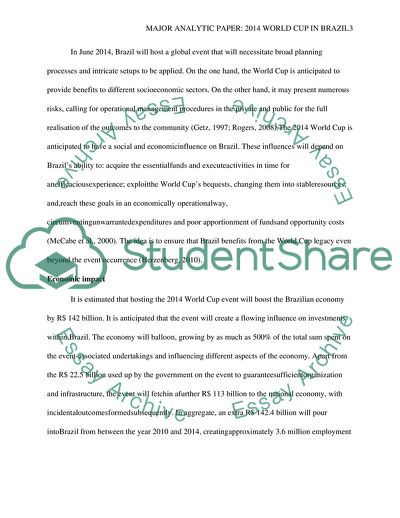Cite this document
(2014 World Cup in Brazil Coursework Example | Topics and Well Written Essays - 2250 words, n.d.)
2014 World Cup in Brazil Coursework Example | Topics and Well Written Essays - 2250 words. https://studentshare.org/tourism/1826908-major-analytical-paper
2014 World Cup in Brazil Coursework Example | Topics and Well Written Essays - 2250 words. https://studentshare.org/tourism/1826908-major-analytical-paper
(2014 World Cup in Brazil Coursework Example | Topics and Well Written Essays - 2250 Words)
2014 World Cup in Brazil Coursework Example | Topics and Well Written Essays - 2250 Words. https://studentshare.org/tourism/1826908-major-analytical-paper.
2014 World Cup in Brazil Coursework Example | Topics and Well Written Essays - 2250 Words. https://studentshare.org/tourism/1826908-major-analytical-paper.
“2014 World Cup in Brazil Coursework Example | Topics and Well Written Essays - 2250 Words”. https://studentshare.org/tourism/1826908-major-analytical-paper.


